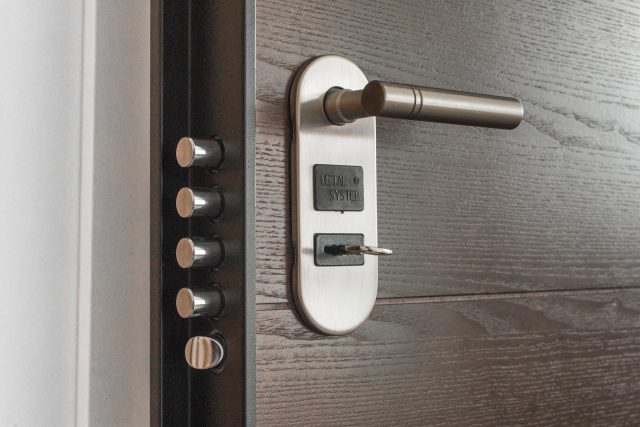
A traditional five-pin locking system with seven height options can be built for 78,125 different possible keys. Thankfully, despite the limited number of key options, manufacturers take care in distribution to limit the same key and lock setup ending up next door to each other. As a landlord, you can do your part by implementing a rental property key management system. This helps protect both you and your tenant.
Key Management System
The first step in creating a key management system is knowing the law. In Texas, landlords are legally required to change the locks between each tenant. The Texas Property Code, Subchapter D, Sections 92.151 – 92.170 outlines landlords’ requirements.
A system is crucial to ensuring you retain a key for each lock at each property. First, create a centralized location where you can retain a set of keys for each property. Then, label each key so that you can easily and quickly determine which one you need at a moment’s notice.
Multiple Sets
Always retain multiple sets of keys for each property. You will need to give one set to the new tenant and retain another copy for yourself. It’s also smart to have a third set that you can give to a contractor if they need to access the property when you are unable to meet them. However, only give keys to a contractor that you can trust.
Regular Auditing
It is good practice to regularly audit the keys that you have in your possession for your rental properties. Over time, you may find that you’ve collected more keys than you have locks. This happens when landlords change a set of locks, and instead of replacing the old keys, they simply add the new keys to the ring. Over the course of several replacements, the keys build up, and the collection becomes unmanageable. Auditing a set of keys means taking them to the rental property, using them in the locks, and getting rid of any outdated keys.
Upgrading to a Keyless Entry System
Modern landlords are embracing technology by replacing the traditional keyed locks with keyless smart locks. These locks connect to the internet, can be remotely controlled and managed, and are easily reset. These modern locks can connect to a smart home system and eliminate the risk of a tenant losing their keys. A sophisticated system can manage multiple codes for a single lock. This allows landlords to track the comings and goings of different parties. Perhaps there’s a specific code for realtors that are showing a vacant property. Or there could be a specific code for a contractor that only works for as long as they need access to the property.
While smart locks seem like an expensive investment, the upfront cost translates to long-term savings. There’s no longer a need to change the physical lock or get new keys. These smart locks can also be listed as an extra amenity to the property.
Trust a Property Manager
Some property owners don’t have the time to personally manage their rental properties. This is when it’s helpful to hire a property manager. As part of their services, the manager will track and manage the keys for the property. When a tenant moves out, the manager will arrange for rekeying. This takes the pressure and stress off the shoulders of the property owner.
Better Manage Your Property Keys
It doesn’t matter if you own one or multiple rental properties; it’s your responsibility to carefully manage the keys to your rental property. You’ll need to plan for key changes and have multiple sets. If you’re ready to modernize, you could eliminate the keys entirely and make the change from traditional locks to keyless ones.
If you need assistance with rental property key management for your rental properties, then reach out to our property managers.

